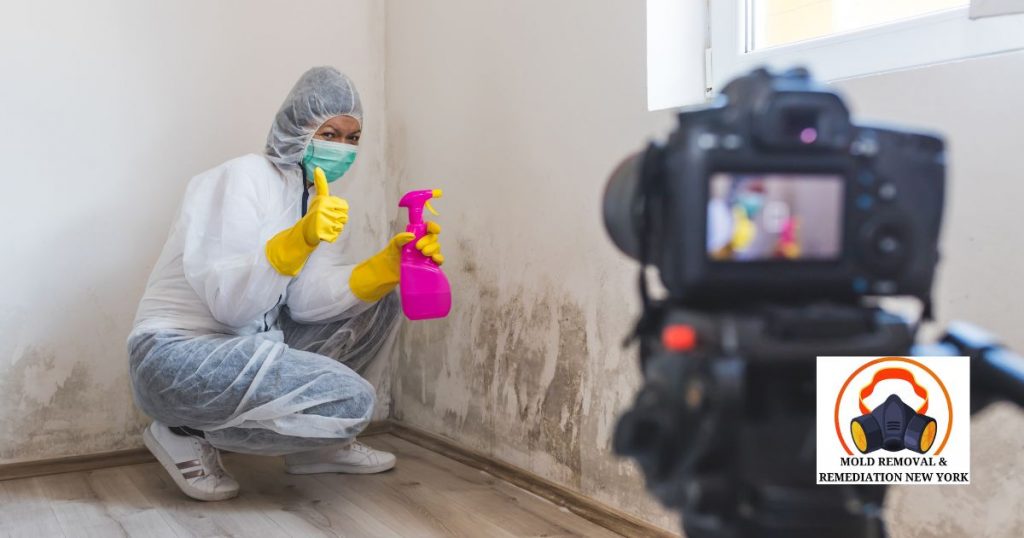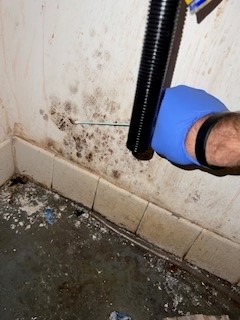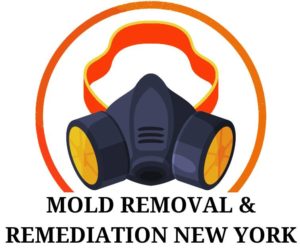
Mold is a common problem in many homes and buildings, including Staten Island. Various factors, such as moisture, humidity, and poor ventilation, can cause mold growth. It can damage your property and pose serious health risks to you and your family. That’s why it is essential to understand the importance of mold sampling and its benefits in Staten Island.
In this article, we will delve into mold sampling. We will explain mold sampling and the methods used to detect and identify mold. We will also discuss the benefits of mold sampling, including how it can help prevent health hazards and save you from expensive remediation costs. Additionally, we will provide insights on when mold sampling is necessary and who should conduct the sampling process.
What is mold sampling?
Mold sampling is the process of testing indoor air and surfaces for mold. It involves collecting samples from the air, surfaces, or materials suspected of harboring mold. The samples are then analyzed in a laboratory to identify the type and extent of mold growth.
There are two main mold sampling methods: air sampling and surface sampling. Air sampling involves collecting samples of mold spores from the air using a specialized pump and a spore trap. Surface sampling involves collecting mold samples from surfaces using swabs, tapes, or bulk samples.
The mold sampling process typically involves the following steps:
- Visual Inspection: A qualified mold inspector visually inspects the property to identify areas with visible mold growth and potential sources of mold.
- Sample Collection: The inspector collects samples of air and surfaces using specialized equipment, such as pumps, spore traps, swabs, and tapes.
- Laboratory Analysis: The samples are sent to a laboratory for analysis. The laboratory technician examines the models under a microscope to identify the type and quantity of mold present.
- Report and Recommendations: The inspector receives information from the laboratory and provides recommendations on addressing the mold problem based on the results.
Mold sampling is crucial in identifying mold growth and preventing health hazards. It helps determine the mold growth type and extent, which helps develop a mold remediation plan. Additionally, mold sampling can detect hidden mold growth, which is not visible to the naked eye.
Benefits of Mold Sampling
Mold growth is a serious problem that can affect the indoor air quality of your home or business in Staten Island. It can cause health issues such as respiratory problems, allergic reactions, and infections. Mold growth can damage your property, including walls, ceilings, floors, and personal belongings. This is why mold sampling is crucial in identifying the presence of mold, determining the type and extent of mold growth, and detecting potential health hazards.
Identifying the Presence of Mold
The first benefit of mold sampling is that it can identify the presence of mold growth on your property. Mold can grow in hidden places, such as inside walls, ceilings, and under the flooring. Mold sampling can detect mold growth in these areas, which may not be visible to the naked eye. Identifying the presence of mold is essential in preventing its spread and further damage to your property.

Determining the type and extent of Mold Growth
Mold sampling can determine the type and extent of mold growth in your property. Different types of mold can cause different health hazards, and some are more dangerous than others. The extent of mold growth can also affect the cost and complexity of remediation. With mold sampling, you can determine the specific type of mold and the extent of its development, which can help you develop an effective remediation plan.
Early Detection of Potential Health Hazards
Mold growth can cause health hazards, particularly to individuals with respiratory problems or weakened immune systems. Mold sampling can detect the presence of mold before it causes health issues. Early detection of mold growth can help you proactively address the problem and prevent potential health hazards.
Mold sampling is essential in identifying the presence of mold growth, determining the type and extent of mold growth, and detecting potential health hazards. If you suspect mold growth in your property, consider contacting a certified mold inspector for professional mold sampling and analysis. By doing so, you can protect your property and the health of your family or employees.
When is Mold Sampling Necessary?
Mold growth is a common problem in Staten Island, and it’s essential to know when mold sampling is necessary. Mold sampling may be required when visible signs of mold or suspected mold growth occur. Here are some signs that indicate the need for mold sampling:
- Visible mold growth: If you can see mold growth in your home or business, it’s a sign that you need to conduct mold sampling to determine the type and extent of mold growth.
- Musty odors: Musty odors are often an indication of mold growth. If you notice a musty smell in your home or business, it’s a sign that mold sampling may be necessary.
- Water damage: If your property has experienced water damage, such as flooding or leaks, mold may grow in the affected areas. Mold sampling is necessary to determine if mold growth is present and to what extent.
- Health symptoms: If you or your family members experience health symptoms, such as allergies, respiratory issues, or skin irritation, it could be a sign of mold exposure. Mold sampling can help to detect mold spores in the air and identify the source of the problem.
In addition to the above signs, mold sampling may also be necessary for situations where you are purchasing a new home or business, renting a property, or renovating a property. Mold sampling can help identify mold problems and prevent costly damages and remediation costs.
If you suspect mold growth in your home or Staten Island business, hiring a qualified mold sampling professional is essential. A reliable mold inspector should have the following qualifications:
- Certification: A certified mold inspector has received specialized training and passed a certification exam in mold inspection.
- Experience: An experienced mold inspector has conducted numerous mold inspections and knows the different types of mold and the appropriate remediation strategies.
- Professional equipment: A reliable mold inspector should have access to professional equipment, such as air samplers and moisture meters.
Mold sampling is necessary when there are visible signs of mold growth, musty odors, water damage, health symptoms or when purchasing, renting, or renovating a property. Hiring a certified and experienced mold inspector for sampling in Staten Island is essential.
Who should Perform Mold Sampling?
Mold sampling is an essential step in identifying and addressing building mold problems. But who should perform mold sampling? The answer is simple: a qualified professional with experience in mold testing and remediation.
An untrained individual should refrain from attempting mold sampling. Improper sampling can worsen the mold problem by spreading mold spores throughout the building. In addition, an untrained individual may need to collect the appropriate samples, leading to inaccurate results.
A qualified mold professional should be certified by recognized organizations such as the American Council for Accredited Certification (ACAC) or the Indoor Air Quality Association (IAQA). These organizations require professionals to pass rigorous exams and demonstrate their knowledge and expertise in the field.
A qualified mold professional will have the knowledge and equipment necessary to sample mold properly. They will know which type of sampling method to use in each situation, whether air sampling, surface sampling, or bulk sampling. They will also know where to take samples, how many to take, and how to properly handle and transport them to the laboratory for analysis.
How long does Mold Sampling Take?
Mold sampling is essential in identifying and addressing building mold problems. One common question about mold sampling is how long it takes to complete the process. The answer is that the time it takes to complete mold sampling will depend on several factors, including the specific situation and the method used.
The method of mold sampling used will affect the time it takes to complete the process. For example, air sampling can be conducted more quickly than surface or bulk sampling. Air sampling involves collecting air samples using specialized equipment. Depending on the situation, the sampling equipment may be set up in the building for some time, such as a few hours or days. Once the sampling period is complete, the samples are sent to a laboratory for analysis. The results are then interpreted by a qualified mold professional, who will provide a report to the building owner or manager.
What happens after Mold Sampling?
After mold sampling, the samples are sent to a laboratory for analysis. The laboratory will examine the samples and provide a report detailing the mold types and levels present in the samples.
Once the mold sampling results are available, a qualified mold professional will interpret the findings and provide a report to the building owner or manager. The information will include recommendations for addressing any mold problems that were identified.
The recommendations may include steps to prevent mold growth in the future, such as improving ventilation or reducing humidity levels in the building. In addition, the report may recommend specific remediation steps to address any existing mold problems. These steps may include cleaning or removing affected materials, applying anti-microbial treatments, or using specialized equipment to remove mold spores from the air.
Mold sampling is essential in identifying and addressing building mold problems. It is essential for those living on Staten Island due to the high humidity and frequent flooding. By properly sampling for mold, building owners and managers can get an accurate picture of any mold problems that may be present and take appropriate steps to address them.
Mold sampling should always be performed by a qualified professional with experience in mold testing and remediation. They will know which type of sampling method to use in each situation, how to collect and handle the samples correctly, and how to interpret the results to provide recommendations for addressing mold problems.
If you suspect that there may be mold in your building, do not hesitate to contact a qualified mold professional to perform sampling and testing. Taking action early can help prevent the spread of mold and minimize any potential health risks associated with mold exposure.

